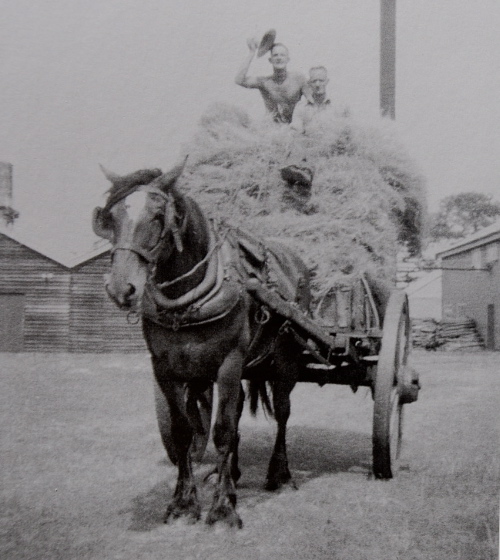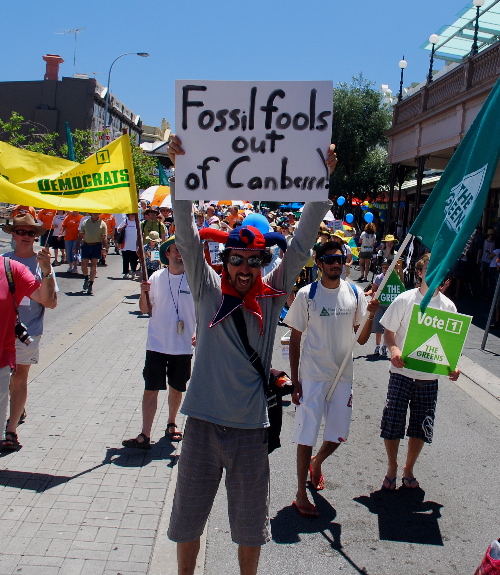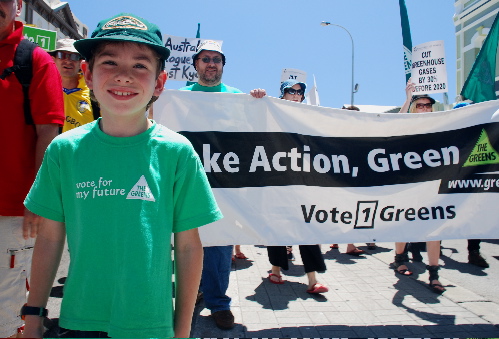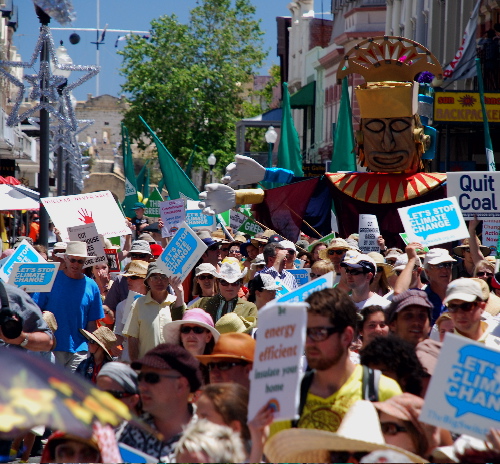The following is a review I recently wrote of A Landscape for Learning: A History of the Grounds of the University of Western Australia by George Seddon and Gillian Lilleyman (UWA Press, 2006). A much shorter version of this review will be published in the journal Studies in Western Australian History in mid 2008. Unless you have had some association with Perth and UWA you may not be intensely interested in what follows. For those who are interested: sorry UWA Press but I suggest that this is the kind of tightly synoptic review which makes reading the actual book redundant.
What makes a landscape for learning? In the opening pages of the book, Seddon calls UWA the most beautiful campus in Australia. He seems to think that this campus is what a site dedicated to the seeking of wisdom should look like. It does makes you relaxed to be in a pleasingly set out green environment such as this one, and a state of relaxed mental alertness is a perfect state to learn it. Perhaps Seddon is right to designate the grounds of UWA a ‘landscape for learning’.

Above: Youth leans on age. I left the garden path and looked upwards in the ‘tropical grove’ in the Great Court.
Prior to learning about the legacy of Sir John Winthrop Hackett, we are taken back to the original state of the site. Before white settlement was felt there, the campus site was covered in marri and jarrah with big old trees dotted here and there of the kind you are hard pressed to find today in the metropolitan area. In the south the site was thickly timbered with sheoak. There were banksias, tuarts, paperbarks and Christmas trees. The site had a shallow water table and relatively fertile clay soils, like the property of the Bussell family, ‘Cattle Chosen’. The Swan used to flood regularly – it does not do so any more because of more recent human changes to the river. The Crawley site was often flooded prior to 1829, and over the millennia the floodwaters had dropped plenty of their sediment load in the area. Sand, silt and organic debris enriched the soil of the site. It was this that made it a more fertile location than is commonly encountered on the Swan coastal plain. For this reason UWA may be considered the closest Western Australia has to a traditional botanical garden.
Seddon notes the importance of the site as a gathering place for the Nyungar people. There was much native food on the site that could be gathered: in seasonal swamps there were frogs, marron, tortoises and snakes. In the waters of the shallow bay there were mullet, salmon, schnapper, cobbler, tailor, shellfish, turtles, crabs and prawns. In 1827 Charles Fraser remarks on the Swan River: ‘Without any exaggeration, I have seen a number of swans which could not have been estimated as less than 500 rise at once, exhibiting a spectacle which, if the size and colour of the birds is taken into account, and the noise and rustling occasioned by the flapping of their wings previous to their rising, is quite unique in its kind’(p.13). The Nyungar women dug for tubers. Zamia nuts were stored for use, and banksias flowers were soaked in water which was to be drunken. There would have been quokkas, quendas, bilbies and tiny honey possums scurrying about the place. It was the site’s plentiful food supply that made it a cultural gathering place for the Aboriginals. While today cricket is played today on James oval, hundreds of years ago boomerangs may have been thrown in the same spot, demonstrating a pleasing continuity of human usage.
The lands biodiversity was not noticed by early white society. In an epithet which prefaces the volume Adam Armstrong in an advertisement to sell nearby land at Dalkeith cottage writes: ‘As a goat run it is not surpassed by any in the Colony.’ (1838) Fruit trees adorned the site around a small farm, and plenty of melons were grown. Gillian Lilleyman traces the history of the site as a farm for goats, fruit and vegetables in the first decades of settlement.
Later, in the choosing of the site the senate were not all convinced. The site was five kms from the Perth town hall, and sand and bits of limestone were blown across it off the unsealed road running from Perth to Fremantle. Leslie Wilkinson advised on the layout of the campus in the 1920s. His preference was for a ‘wooded park’ of trees and grass. Especially mature marri trees (Corymbia calophylla), for example, were retained, but most of the flora was removed from the site. From 1922 gelignite was used to blow up the bigger and older marri and jarrah trees. Henry Campbell, superintendent of the grounds, went on to plant rows of palms in the Great Court at the end of the 1920s. In 1928 he planted the oaks of the Oak Court.
The book does not provide a broad-brushed botanical tour of the campus, as I would hoping it would. However, on pages 64 and 65 the book contains a plan and key of all the trees in the Great Court, which will be of interest to those who would like to know what they are looking at while they wander around the most immediately botanically impressive area of UWA. Indeed, for my own uses this is the most valuable part of the whole book. It is a great pity that the numbers 96 to 158 have been left off in the right hand margin in the printing of the book. Interestingly of the trees Campbell planted half, by species, come from the eastern seaboard of Australia. As the authors point out, so did half the human population of Perth at the time of their planting.
I don’t want to belittle the contribution of Seddon in this book. He and his coauthor have performed an accurate and detailed work of local history in this volume, and more generally Seddon’s books have taught me more than anybody else about my home place, the soils and plants of the Swan Plain around Perth. However, in discussing the trees of the campus Seddon never invites the reader into a lyrical and affectionate relationship. In discussing the trees of the Great Court he writes: ‘Some trees grow too well and are out of scale. Others struggle, even after the best care. Off with their heads!’(p.169). In my experience Seddon is more a historian and a scientist than a writer attuned to the poetics of the natural world. In my own view some of the most impressive trees on campus come from Queensland: the towering white and muscular trunks of the lemon-scented gums besides Reid Library, and the rod-like heights of the kauris. Seddon, in typical, taxonomically snobbish form, prefers the most rare specimens, for example the Karrir plum in the Tropical Grove (p.l67).
Some romance… Henry Campbell died in 1930, and his younger protégé, Oliver Dowell moved in to take his place. Dowell had an appreciation of the native flora. The karri in the north-west quadrant of the Great Court with the iron seat around known as the honeymoon tree is so called because Dowell collected its seed in the south-west on his honeymoon. In the early 1940s the US Navy established at base on Matilda Bay and used some of the University buildings to house the personnel. Because of the black-outs required at night Whitfield Court began to be used as a ‘trysting’ area, and complaints were made – the behaviour was said to be upsetting the caretaker’s sensibilities.
In the 1950s around fifty sheep grazed the lawns in place of mowers, and were even shorn for a profit by the grounds staff. The university would have been a much more peaceful place without noisy mowers and leaf blowers doing their job here and there.

Carting hay in the early 1930s on campus. Horses were important members of the UWA work force till the 1950s. Although Seddon fails to mention it, there is no technical reason why they could not be so again in 2007, making the campus quieter and less polluting.
So, let’s return to the title of the book. What makes a Landscape for Learning? Despite the wonderful clay soils of UWA, and the enjoyment provided by floristic diversity, one wonders if native plants aren’t more appropriately planted in the grounds from now onwards considering declining rainfall in the south-west and CSIRO projections of continuing decline in precipitation due to climate warming. Western Australia is not eastern Queensland, despite the Umbrella tree being a feature in so many gardens of the Western suburbs. In the absence of such native plantings coming to dominate the UWA campus, as they did a hundred years ago, perhaps we will see another instance of a university not practicing sustainability while its courses increasingly preach it. The more university institutions perpetuate a radical disconnect between course content which stresses the importance of environmental sustainability, and buildings and grounds which do not enact this philosophy, the less seriously Perth’s young undergraduates will take the advice of the memorial besides Reid Library to: ‘Seek Wisdom’.





